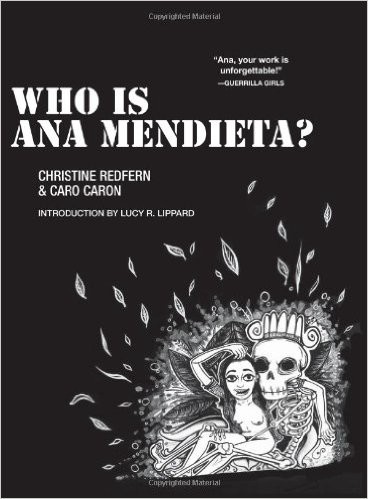Ana Mendieta, November 18, 1948 — September 8, 1985

Today is the thirtieth anniversary of Ana Mendieta’s death. I’m hesitant to define her by her death, because her life was so much more important, but it’s a crucial touchstone that should be acknowledged.
A few years ago I interviewed Christine Redfern, who co-wrote the graphic novel Who Is Ana Mendieta, as part of a larger essay on Ana Mendieta’s ongoing legacy. She said something I still think about very often: in a 2011 New Yorker profile of Carl Andre, Mendieta’s husband who was arrested but ultimately acquitted of her death, Calvin Tomkins wrote that “it is hard to think of an artist whose career has been so negatively affected by circumstances that have nothing to do with his art.” Redfern, in her email to me, responded, “I can think of one artist whose career was more negatively affected by the very same set of circumstances. Ana Mendieta.”
Ana Mendieta is, perhaps, my favorite artist; I have been drawn to her for a long time, and I tend to seek her out whenever I have the opportunity to. For those who don’t know, Mendieta was a remarkably prolific artist who worked in a variety of mediums, including performance, film, and photography. She called it “earth-body-art” and described it as:
“I have been carrying out a dialogue between the landscape and the female body (based on my own silhouette). I believe this has been a direct result of my having been torn from my homeland (Cuba) during my adolescence. I am overwhelmed by the feeling of having been cast from the womb (nature). My art is the way I re-establish the bonds that unite me to the universe.”
The official Ana Mendieta Facebook page has been posted photos of stickers around Mendieta’s old apartment, her face glued to poles and streetlights. Currently, an exhibition of her films is at the Katherine E. Nash Gallery on the University of Minnesota campus; you can also view Elise Rasmussen’s incredible projects inspired by Ana Mendieta on her website. “Finding Ana” are the photos Rasmussen took of Mendieta’s Rupestrian Sculptures in Cuba. Officially, the works were thought to be destroyed, but on a 2012 trip Rasmussen found them, “weathered but not dismantled,” in her words. “Variations” is a video project where two actors recreate the final hours of Mendieta’s life according to the multiple official (and conflicting) statements given by Andre after her death, incorporating feedback from the audience as they go.
As well, Mendieta’s contributions to the feminist art journal Heresies can be read here, and this piece from the New York Times on a 2004 exhibition of her work at the Whitney is a good reference point for her overall body of work.
I’d highly recommend spending some time reading and thinking about Ana today; there are many, many ways we can re-establish her bonds to the universe.